Into the Void: A Short History of Open-World Space Sims
A brief history of one gaming's most ambitious genres
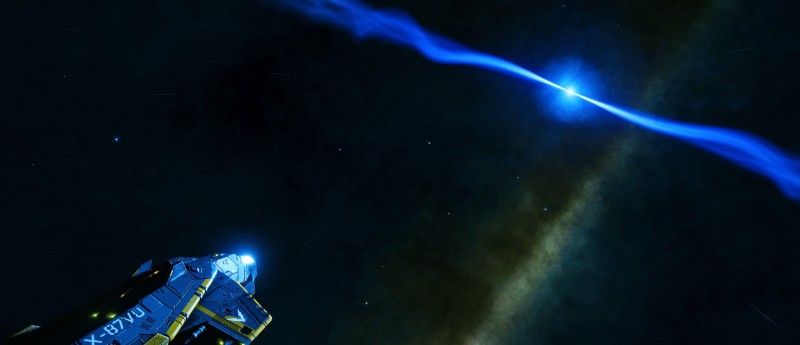
In all my years of gaming, one of the most hardcore fanbases I’ve come across has been the fans of open-world space sims : games like Elite, Freelancer, X and No Man’s Sky. You need only look at the runaway success of Star Citizen crowdfunding to see that this is a genre that really ticks the boxes for many gamers in a big way. The open-world space sim genre is otherwise known by the somewhat cumbersome “space trading and combat” moniker, and it's one of the oldest genres in the modern games industry.
With many gamers also counting themselves as fans of science fiction, it is perhaps unsurprising that a genre that allows you to be your own version of Han Solo or Boba Fett would be popular. However, the story of this genre is far more complex than that.
The Pioneers
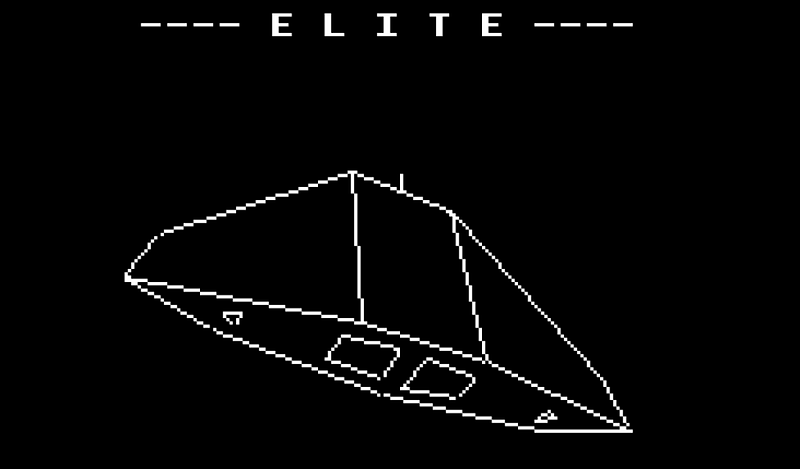
In 1984, Ian Bell and David Braben released Elite for the BBC Micro. Elite was, quite simply put, extraordinary. This was a game that — in 1984 — allowed players to explore up to eight different galaxies, each with 256 planets to visit. Players could dock at space stations, trade commodities, take up bounty hunting — thanks to procedural generation, the level of freedom was unparalleled. Elite was a huge success in the UK and abroad, and over the years has become somewhat of a badge of pride for the Brits— the Royal Mail at one point featured the game among limited stamp collection.
Elite was probably one of the first truly open-world games, and it gave both gamers and developers a glimpse of what was possible with a combination of clever programming and technology. Open-world games are everywhere today, but it was the likes of Elite that forged the path.
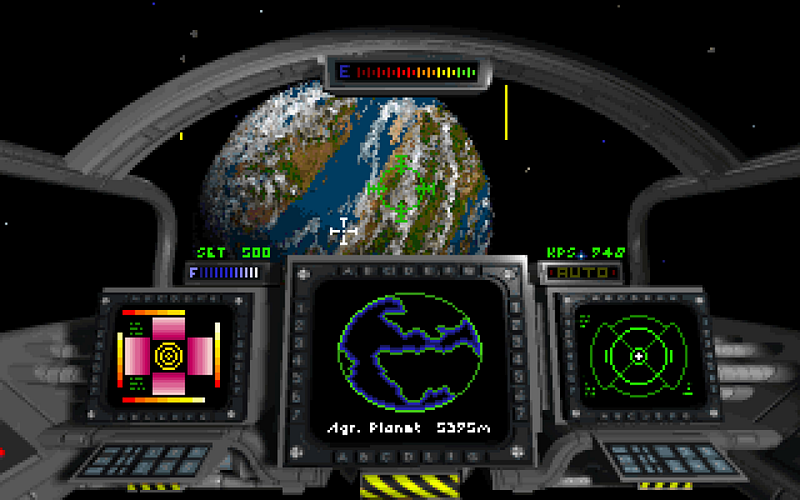
Inspired by Elite, Chris Roberts’ took his popular Wing Commander series and had a crack at the genre with 1993’s Wing Commander: Privateer. The universe was not as expansive as Elite’s, and Privateer was a more handcrafted affair. However, thanks to the combined fanbases of both Wing Commander and open-world space sims, Privateer was another huge success for the genre.
Shortly after the release of Privateer, Braben (with some “assistance” from Bell) returned with Frontier: Elite II. Frontier was a huge leap forward from Elite; the graphics were exceptional, and the scale unparalleled; Frontier featured 513,982,470 unique star systems, 1:1 planets and dozens of additional features, including an advanced flight model that closely emulated Newtonian physics, allowing players to traverse star systems using gravitational slingshots.
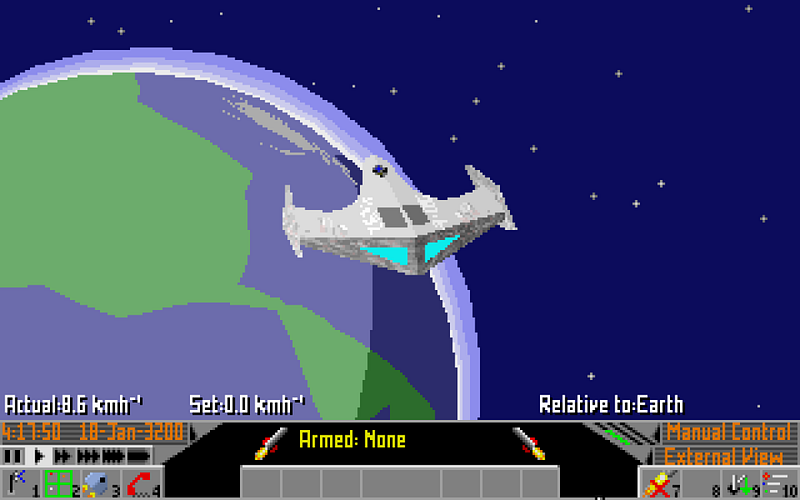
Another sequel followed in 1995, with Frontier: First Encounters. Unfortunately, the game’s development was overshadowed by legal troubles and soured relations between Ian Bell and David Braben. The game was released early, in an incomplete and bug-ridden state. Meanwhile, procedural generation was beginning to show its limitations, and gamers were starting to find more enjoyment in games with tighter, more focused narratives, like TIE Fighter and Wing Commander IV. Even Privateer’s sequel, Privateer 2: The Darkening was a much more focused affair.
The final nail in coffin for the genre’s first generation was the controversial Battlecruiser 3000AD by Derek Smart. Smart had begun development in the early 90s, and as he became notorious for, he hyped the game immensely. The hype was real, but the development was another tumultuous and controversial affair, and a buggy Battlecruiser 3000AD finally released in 1996 to scathing reviews.

The open-world space sim genre entered a dormant period in the late '90s, while the rest of the industry was wrapped up in the first-person shooter and real-time strategy craze. Then in 1999, the open-world space sim returned thanks to a German developer called Egosoft.
The Next Generation

From the moment they appeared, it was obvious that open-world space sims would be successful. They embodied what most gamers desired more than anything — the freedom to totally immerse yourself in another world. One thing that people perhaps didn’t expect was that players would so thoroughly immerse themselves in “mundane” jobs — transporting passengers and cargo as a freighter pilot, or pursuing credits through simple trading. The first generation of these games showed that players were not only happy to pursue mundane sci-fi equivalents of real-life jobs — they absolutely loved it. This is exactly what Egosoft banked on when they spearheaded the next generation of open-world space sims with 1999’s X: Beyond the Frontier.
X was the Wall Street of the space trading and combat genre — Not only did players have a huge universe to explore, they could use their accumulated credits to buy fleets of industrials spaceships, factories and space stations to exploit resources and manufacture goods to sell throughout the universe. X has a steep learning curve, but for those players who conquered the complex gameplay and occasionally awkward English translations, they were rewarded with an incredibly deep and complex game.
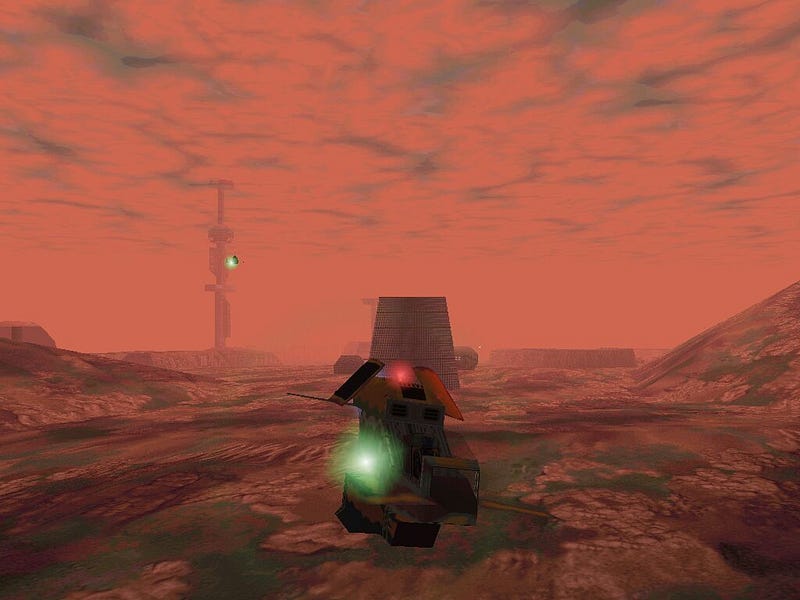
X wasn’t the first open-world space sim of this next generation (The Software Refinery’s underappreciated gem Hardwar was released in 1998), but it was one of the catalysts for a brief revival of the genre, albeit in a changed form. By the year 2000, the joystick was becoming a less-common peripheral, and space sims were falling out of favour. Besides 2000’s semi-open-world Tachyon: The Fringe, the new generation of open-world space sims could mostly be played without a joystick. Independence War 2: The Edge of Chaos (2001) is one frequently overlooked game, but it was in 2003 that this next generation of games peaked, with two particularly notable open-world space games.
The first of these was a title from a name that has become synonymous with space sims, Chris Roberts. Roberts had been there from the start with Privateer, and was finally returning to the genre with the highly anticipated Freelancer. By the time 2003 arrived, Freelancer’s development had been dragging on for many years, and in true Roberts fashion, was subjected to monumental hype thanks to some pretty outlandish promises. Developer Digital Anvil was eventually acquired by Microsoft, who finally put their foot down and pushed the game out before the entire scope of Roberts’ vision was realised.

Freelancer might not have lived up to the hype, but it was a phenomenal game. One of the most notable features was the flight model, which was entirely mouse-and-keyboard based, unlike most other games in the space sim genre. Another notable feature that gave Freelancer much of its flavour was the “science-fantasy” aesthetic. This wasn’t a game that would pass an astronomer’s realism tests, but it was a damn beautiful game.
The other big name from 2003 is a game that is still played to this day, a game that has thoroughly ingrained itself in gaming history –the MMO, EVE Online. EVE is not strictly a “space sim” per se, but it captured the feeling of open-space better than most other games. Rather than directly flying their ship, players would control their ship indirectly with mouse and keyboard commands.
EVE was the realisation of what fans of open-world space sims had been craving for years — an open-world where they could encounter other players. It featured an in-game economy and trading system closely modelled on real-world economies, a huge universe of systems that ranged from safe to completely lawless, and most importantly, tons of beautifully designed spaceships for players to buy.

EVE’s complexity eventually earned it the nickname “spreadsheets in space”, because players often used programs like Excel to track earnings and monitor profits and loss over the long-term. The game also developed a reputation as the most cutthroat MMO of all time — in-game corporations (EVE’s equivalent of guilds or clans) would frequently engage in massive wars against one another that could last months or years, with conflict spilling over into the real-world, and espionage playing a critical role. Corporations spent a great deal of time vetting new members in order to ensure they weren’t spies from rival corporations, while many players paid for multiple accounts to enable them to conduct elaborate espionage operations.
Despite a well-received showing from two influential games, the open-world space sim genre didn’t really capture the minds of most early-2000s gamers. This era was the rise of the PlayStation and Xbox, while the desktop was dominated by the next generation of strategy and shooters like Call of Duty and Warcraft 3. The space trading and combat genre continued to plug away in the background thanks to titles like the ongoing X series; and while not strictly the same genre, EVE Online did do its part in ensuring open-world space games remained part of the early 2000s gaming zeitgeist. But other than this, it would be many years before the genre made a triumphant return.
The Empire Strikes Back

The early 2010s saw the rise of Kickstarter, and on the back of that, the explosion of crowdfunding for video games. The success of crowdfunding was understandable — the games industry had begun to stagnate, as shareholder-controlled publishers refused to greenlight any games that had even a whiff of risk or niche-appeal. One of the genres that didn’t appeal to the publishing giants was the open-world space sim — in their opinion, the era of joysticks and aimless open-worlds was over.
Once again, Chris Roberts came to the genre’s rescue with the announcement of Star Citizen in 2012. Although the game is still unreleased in 2023 (and still in Alpha), it has been one of the biggest reasons for the genre’s revival, and the success of Star Citizen’s crowdfunding campaign demonstrates the insatiable desire among gamers for more open-world space sims.
Despite generating significant controversy over the past decade due to the funding model and protracted development, Star Citizen’s Alpha release hints at a game that, if Roberts can pull it off, may well be one of the most spectacular games ever made. Whether he can live up to the hype remains to be seen.
Shortly after the announcement of Star Citizen in 2012 was the announcement of the other major catalyst for the genre’s revival, and the return of the series that started it all — Elite: Dangerous. After many years of legal troubles and disagreements between Ian Bell and David Braben, the rights to the Elite IP were finally resolved, and Braben’s development studio Frontier Developments embraced the crowdfunding model with an immensely successful Kickstarter campaign.

Unlike Star Citizen, Elite: Dangerous was released in 2014, around two years after first being announced. Elite: Dangerous was initially lacking in a lot of gameplay depth, but ongoing development since then has led to a game that is a more-than-worthy successor to the hallowed Elite crown. Due to technical limitations in the 80s and early 90s, ship designs in Elite and Frontier were often little more than simple polygons. Elite: Dangerous pays homage to these early ship designs by using the same shapes, but adding exceptional new levels of detail.
The Elite DNA also lives on in the sheer size of the universe. Using a procedural generation system called the “Stellar Forge”, Frontier Developments have created a universe consisting of around 400 billion stars in their 1:1 scale representation of the Milky Way galaxy. According to Frontier, as of January 2023, players had only visited 0.059% of the galaxy so far — at this rate, it would take thousands of years for players to see everything that Elite: Dangerous has to offer. This has, however, led to some debate over whether this is too much freedom — and also, accusations of Elite: Dangerous being “a mile wide, but an inch deep”. Indeed, even the Star Citizen Alpha has many features that Elite: Dangerous still lacks after eight years of post-release development. To Frontier’s credit, Elite: Dangerous is a vastly more enjoyable game today than it was in 2014.
Elite: Dangerous and Star Citizen are symbolic of the two approaches to designing open-worlds in games. On the one hand you have the Elite approach — a procedurally generated universe so immense that the scale of freedom is overwhelming, but lacking in finer details. On the other hand is the Roberts approach — a smaller universe (Star Citizen’s goal is to have only about 100 planets at this stage), however with significantly greater detail; clarity over freedom. This dichotomy is reflected in other open-world genres as well, such as the difference between Minecraft and The Elder Scrolls V: Skyrim.

Another notable game responsible for the open-world space sim’s second revival, is 2016’s No Man’s Sky by Hello Games. No Man’s Sky took procedural generation to the next level, with a universe consisting of 18 quintillion planets, each with their own unique environment. The open-world space sim is a genre particularly susceptible to hype, and No Man’s Sky is another notable example of this. Excitement for the release was enormous, so when the game finally released lacking a significant number of features that were originally promised, gamers and critics weren’t happy. To their credit, Hello Games acknowledged this almost immediately, and have spent the years since release polishing, refining and patching their game to the point where it is now quite highly regarded.
This has been another feature of the open-world space sim genre — post release development. From the genre’s earliest days, developers have often continued post-release support. Whether it is because these huge worlds continue to produce unpredictable bugs hidden in their darkest corners, or whether it is simply the fact that the developers are passionate about creating worlds, it is comforting for players that an open-world space sim is almost always a long-term investment, bound to provide entertainment for years to come.
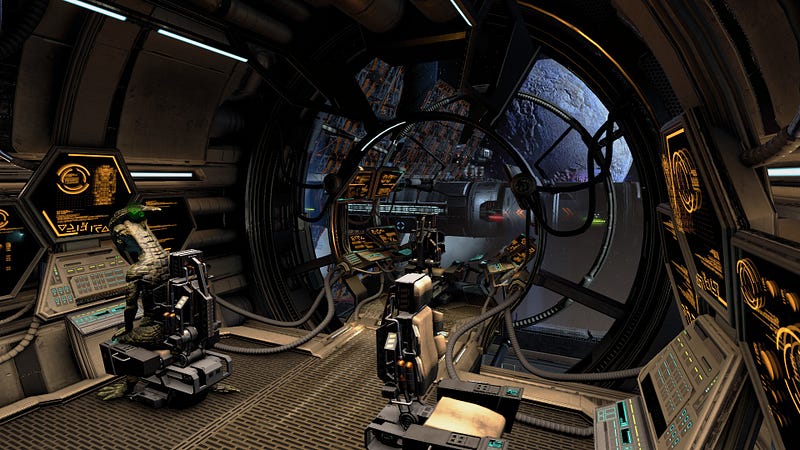
Today, the genre seems to have found its stride more than ever before, and each year seems to produce yet another spin on the classic formula. In 2018, Egosoft returned with X4: Foundations, complete with all the jankiness and economic minutiae that they have become famous for. Meanwhile, titles like Space Engineers, the Evochron series, the Rebel Galaxy series and Everspace continue to steer the genre in new directions.

The open-world space sim has always held a special place in my heart, because it symbolises everything I love about games — the ability to immerse in yourself another world, whether realistic or fantastic, and forge your own path. As technology improves, these games will only continue to get closer to the vision that Ian Bell and David Braben first envisioned when they sat in front of Elite on a BBC Micro computer. Maybe one day, when Star Citizen is finally released or atmospheric earth-like planets get added to Elite: Dangerous, we might come up with a less clunky term than “space trading and combat”, because these games are so much more than that. Until then, however, I’ll be setting a course for the most distant star I can find. See you out in the black.
Comments
Sign in or become a SUPERJUMP member to join the conversation.